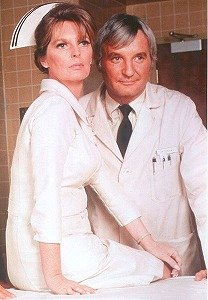Purposeful production of alcoholic drinks is common and often reflects cultural and religious peculiarities as much as geographical and sociological conditions.
Discovery of late Stone Age jugs suggest that intentionally fermented beverages existed at least as early as the Neolithic period (c. 10,000 BC).
The ability to metabolize alcohol likely predates humanity with primates eating fermenting fruit.
The oldest verifiable brewery has been found in a prehistoric burial site in a cave near Haifa in modern-day Israel. Researchers have found residue of 13,000-year-old beer that they think might have been used for ritual feasts to honor the dead. The traces of a wheat-and-barley-based alcohol were found in stone mortars carved into the cave floor. Some have proposed that alcoholic drinks predated agriculture and it was the desire for alcoholic drinks that lead to agriculture and civilization.
As early as 7000 BC, chemical analysis of jars from the Neolithic village Jiahu in the Henan province of northern China revealed traces of a mixed fermented beverage. According to a study published in the Proceedings of the National Academy of Sciences in December 2004, chemical analysis of the residue confirmed that a fermented drink made of grapes, hawthorn berries, honey, and rice was being produced in 7000–6650 BC. This is approximately the time when barley beer and grape wine were beginning to be made in the Middle East.
Evidence of alcoholic beverages has also been found dating from 5400 to 5000 BC in Hajji Firuz Tepe in Iran, 3150 BC in ancient Egypt, 3000 BC in Babylon, 2000 BC in pre-Hispanic Mexico and 1500 BC in Sudan. According to Guinness, the earliest firm evidence of wine production dates back to 6000 BC in Georgia.
The medicinal use of alcohol was mentioned in Sumerian and Egyptian texts dating from about 2100 BC. The Hebrew Bible recommends giving alcoholic drinks to those who are dying or depressed, so that they can forget their misery (Proverbs 31:6–7).
In 55 BC the Romans took notice of an alcoholic cider being made in Britain using native apples, it quickly became popular and was imported back to the continent where it spread rapidly. People in Northern Spain were making cider around the same time period. Celtic people were known to have been making types of alcoholic cider as early as 3000 BC.
Wine was consumed in Classical Greece at breakfast or at symposia, and in the 1st century BC it was part of the diet of most Roman citizens. Both the Greeks and the Romans generally drank diluted wine (the strength varying from 1 part wine and 1 part water, to 1 part wine and 4 parts water).
In Europe during the Middle Ages, beer, often of very low strength, was an everyday drink for all classes and ages of people. A document from that time mentions nuns having an allowance of six pints of ale each day. Cider and pomace wine were also widely available; grape wine was the prerogative of the higher classes.
By the time the Europeans reached the Americas in the 15th century, several native civilizations had developed alcoholic beverages. According to a post-conquest Aztec document, consumption of the local "wine" (pulque) was generally restricted to religious ceremonies but was freely allowed to those who were older than 70 years. The natives of South America produced a beer-like beverage from cassava or maize, which had to be chewed before fermentation in order to turn the starch into sugar (beverages of this kind are known today as cauim or chicha). This chewing technique was also used in ancient Japan to make sake from rice and other starchy crops.
The earliest evidence of wine was found in what is now China, where jars from Jiahu which date to about 7000 BC were discovered. This early rice wine was produced by fermenting rice, honey, and fruit. What later developed into Chinese civilization grew up along the more northerly Yellow River and fermented a kind of huangjiu from millet. The Zhou attached great importance to alcohol and ascribed the loss of the mandate of Heaven by the earlier Xia and Shang as largely due to their dissolute and alcoholic emperors. An edict ascribed to c. 1116 BC makes it clear that the use of alcohol in moderation was believed to be prescribed by heaven.
Early modern period
During the early modern period (1500–1800), Protestant leaders such as Martin Luther, John Calvin, the leaders of the Anglican Church, and even the Puritans did not differ substantially from the teachings of the Catholic Church: alcohol was a gift of God and created to be used in moderation for pleasure, enjoyment and health; drunkenness was viewed as a sin (see Christian views on alcohol).
From this period through at least the beginning of the 18th century, attitudes toward drinking were characterized by a continued recognition of the positive nature of moderate consumption and an increased concern over the negative effects of drunkenness. The latter, which was generally viewed as arising out of the increased self-indulgence of the time, was seen as a threat to spiritual salvation and societal well-being. English philosopher Thomas Hobbes bemoaned in his Leviathan how "the variety of behaviour in men that have drunk too much is the same with that of madmen", reflecting growing ethical concerns toward alcohol. Intoxication was also inconsistent with the emerging emphasis on rational mastery of self and world and on work and efficiency.
In spite of the ideal of moderation, consumption of alcohol was often high. In the 16th century, alcohol beverage consumption reached 100 liters per person per year in Valladolid, Spain, and Polish peasants consumed up to three liters of beer per day. In Coventry, England, the average amount of beer and ale consumed was about 17 pints per person per week, compared to about three pints today; nationwide, consumption was about one pint per day per capita. Swedish beer consumption may have been 40 times higher than in modern Sweden. English sailors received a ration of a gallon of beer per day, while soldiers received two-thirds of a gallon. In Denmark, the usual consumption of beer appears to have been a gallon per day for adult laborers and sailors. It is important to note that modern beer is much stronger than the beers of the past. While current beers are 3–5% alcohol, the beer drunk in the historical past was generally 1% or so.[citation needed] This was known as 'small beer'.
However, the production and distribution of spirits spread slowly. Spirit drinking was still largely for medicinal purposes throughout most of the 16th century. It has been said of distilled alcohol that "the sixteenth century created it; the seventeenth century consolidated it; the eighteenth popularized it."
The United States of America
In colonial period of America from around 1623, when a Plymouth minister named William Blackstone began distributing apples and flowers, up until the mid-1800s, hard cider was the primary alcoholic drink of the people. Hard cider was prominent throughout this entire period and nothing compared in scope or availability. It was one of the few aspects of American culture that all the colonies shared. Settlement along the frontier often included a legal requirement whereby an orchard of mature apple trees bearing fruit within three years of settlement were required before a land title was officially granted. For example, The Ohio Company required settlers to plant not less than fifty apple trees and twenty peach trees within three years. These plantings would guarantee land titles. In 1767, the average New England family was consuming seven barrels of hard cider annually, which equates to about 35-gallons per person. Around the mid-1800s, newly arrived immigrants from Germany and elsewhere increased beer's popularity, and the temperance movement and continued westward expansion caused farmers to abandon their cider orchards.
In the early 19th century, Americans had inherited a hearty drinking tradition. Drinking hard liquor was a universally popular occurrence in early nineteenth-century America. Many types of alcohol were consumed. One reason for this heavy drinking was attributed to an overabundance of corn on the western frontier, which encouraged the widespread production of cheap whiskey. It was at this time that alcohol became an important part of the American diet.
In the 1820s, Americans drank seven gallons of alcohol per person annually.
In colonial America, water contamination was common. Two means to ensure that waterborne illness, for example typhoid and cholera, was not conveyed by water was to boil it in the process of making tea or coffee, or to use it to make alcohol. As a result, alcohol consumption was much higher in the nineteenth century than it is today -- 7.1 US gallons of pure alcohol per person per year. Before the construction of the Erie Canal, transportation of grain from the west was cost prohibitive; farmers instead converted their grain to alcohol for shipping eastward. This dependence on alcohol as a revenue source led to the Whiskey Rebellion of 1794. Later in the nineteenth century opposition to alcohol grew in the form of the temperance movement, culminating in Prohibition in the United States from 1920 to 1933.
If you want to read more, go here: https://en.wikipedia.org/wiki/History_of_alcoholic_drinks
- 1 (8-ounce) package cream cheese, softened
- 2 cups powdered sugar
- 2 teaspoons vanilla extract
- 1/2 cup whipping cream, whipped
- Beat cream cheese, powdered sugar, and vanilla at medium speed of an electric beater until fluffy. Fold in whipped cream; serve with fresh strawberries.

1927 – George C. Scott, American actor (d. 1999)
Annually, National No Beard Day on October 18th celebrates the clean shaven among us. The smoother the face, the bigger the celebration!
Whether you have had your beard for years or it is relatively new for you, this is the day to shave it off and go smooth. Perhaps your partner doesn’t like your beard, or you just haven’t shaved it off for years. No Beard Day is the day to see what you look like without it.
Achieving a close, kissable shave is a lost art that faded with a generation who had the first color televisions installed. Consider investing in the tools your grandfather or possibly your great-grandfather used – either a safety razor or a straight razor will give you the closest shave along with a natural bristled shaving brush and shaving soap. More care and time may be required, but the results are well worth the effort.
HOW TO OBSERVE
Shave and post before and after photos on social media.
You can also explore beard styles in preparation for growing your beard out again. Check out these 7 Popular Beard Styles Throughout History.
NATIONAL NO BEARD DAY HISTORY
National Day Calendar® continues researching the origins of this fashionable holiday. However, next month is No Shave November and since we are halfway through October, indications suggest we start there.


























No comments:
Post a Comment